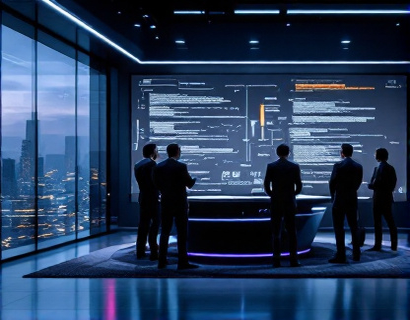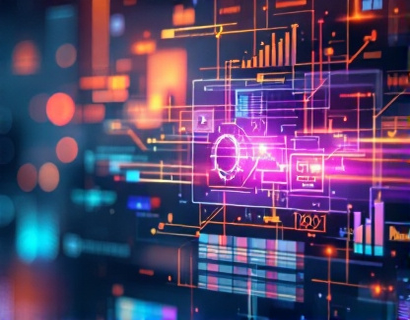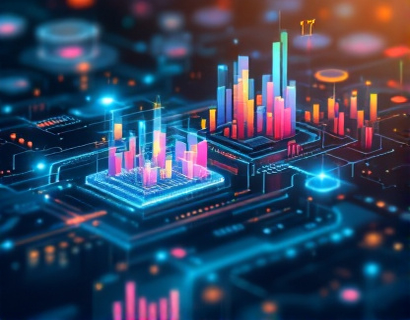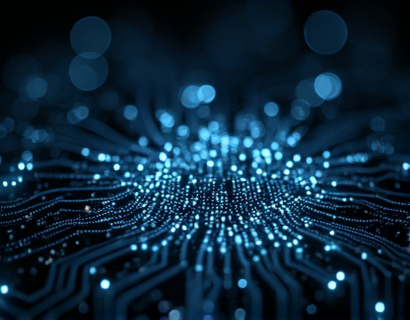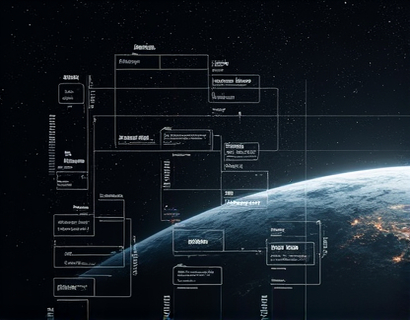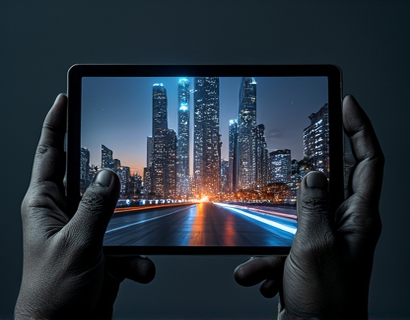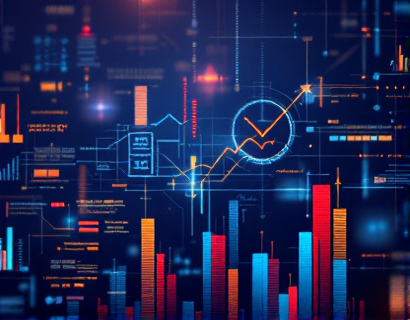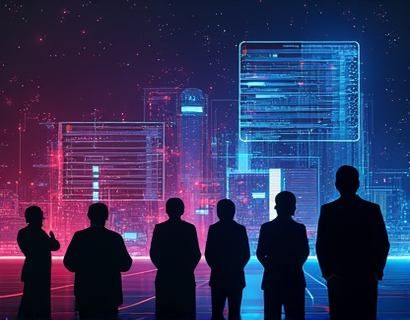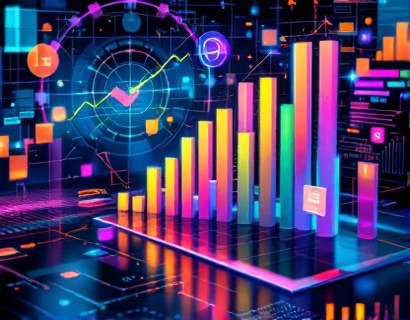Decentralized Productivity Boost: Leveraging AI and Crypto for Next-Gen App Solutions
The intersection of artificial intelligence and cryptocurrency is giving rise to a new era of productivity tools and applications. This fusion is not only transforming how tasks are managed and completed but also redefining the landscape of digital solutions. For tech enthusiasts, early adopters, and productivity-focused professionals, understanding this synergy is crucial. This article delves into how AI and cryptocurrency are converging to create decentralized app solutions that are set to revolutionize the way we work and interact in the digital realm.
The traditional centralized models of software development and application deployment are being challenged by decentralized technologies. Blockchain, the backbone of cryptocurrency, offers a secure, transparent, and tamper-proof way to manage data and transactions. When combined with AI, which excels in automation, data analysis, and predictive capabilities, the potential for innovation becomes immense. This article explores how these technologies are being harnessed to build next-generation applications that are more efficient, secure, and user-friendly.
Decentralized Applications: A New Paradigm
Decentralized applications, or dApps, operate on a blockchain network rather than a centralized server. This shift has profound implications for productivity tools. One of the primary advantages of dApps is their resilience and reliability. Since there is no single point of failure, these applications can operate seamlessly even in the event of network issues or attacks. For users relying on productivity tools, this means uninterrupted access and consistent performance, which is critical in fast-paced professional environments.
Moreover, dApps enhance data ownership and privacy. In a centralized model, user data is often stored on servers controlled by the company providing the service. This centralization poses significant risks in terms of data breaches and misuse. Decentralized applications, on the other hand, allow users to maintain control over their data. Blockchain technology ensures that data is encrypted and distributed across a network of nodes, making it extremely difficult for unauthorized parties to access or alter it.
AI-Driven Automation in Decentralized Apps
The integration of AI into decentralized applications brings automation to a whole new level. AI algorithms can process vast amounts of data, identify patterns, and make predictions with high accuracy. In the context of productivity tools, this means automating complex tasks that would otherwise require significant human intervention. For instance, AI can manage scheduling, prioritize tasks, and even assist in content creation, all while running on a decentralized platform.
Consider a scenario where a team of professionals is collaborating on a project across different time zones. A decentralized AI-powered tool can automatically schedule meetings, taking into account each member's availability and preferences. It can also translate documents in real-time, ensuring seamless communication regardless of language barriers. These capabilities not only save time but also reduce the potential for human error, leading to more efficient and effective collaboration.
Smart Contracts: Automating Workflows
Smart contracts are self-executing contracts with the terms of the agreement directly written into code. They run on blockchain networks and automatically enforce and execute the terms when predefined conditions are met. In the realm of productivity, smart contracts can streamline workflows by automating routine tasks and ensuring compliance with agreed-upon rules.
For example, in project management, a smart contract can be programmed to release payment to a freelancer once the deliverables are uploaded and verified by the client. This eliminates the need for intermediaries and reduces the administrative burden on both parties. Similarly, in supply chain management, smart contracts can track the movement of goods, automatically trigger payments, and ensure that all parties adhere to the contract terms. This level of automation not only speeds up processes but also builds trust and transparency among collaborators.
Enhanced Security through Decentralization and AI
Security is a paramount concern in any digital solution, and the combination of decentralization and AI offers robust protection mechanisms. Blockchain's inherent security features, such as cryptographic hashing and consensus algorithms, make it extremely difficult for malicious actors to manipulate data. AI, on the other hand, can detect and respond to threats in real-time, enhancing the overall security posture of decentralized applications.
AI-driven security systems can monitor network activity, identify anomalies, and predict potential attacks before they occur. This proactive approach is particularly valuable in a decentralized environment where traditional security measures may be less effective. By leveraging AI, developers can create more resilient and secure productivity tools that users can trust with their sensitive information.
User-Centric Design in Decentralized Apps
Despite the technical advancements, user experience remains a critical factor in the success of any application. Decentralized apps powered by AI must be designed with the user in mind to ensure widespread adoption. This involves creating intuitive interfaces, providing clear guidance, and ensuring that the benefits of decentralization and AI are accessible to users of all technical backgrounds.
For instance, a decentralized project management tool could offer a user-friendly dashboard that visualizes task progress, automates routine tasks, and provides real-time insights. AI can assist users by offering personalized recommendations and insights based on their workflow patterns. By focusing on user experience, developers can bridge the gap between advanced technology and everyday use, making these tools more appealing to a broader audience.
Case Studies: Real-World Applications
Several real-world examples illustrate the potential of decentralized AI-powered apps in enhancing productivity. One notable example is a decentralized content creation platform that uses AI to assist writers and designers. The platform allows creators to collaborate on projects, with AI tools handling tasks such as research, content suggestion, and design optimization. All data and assets are stored on a blockchain, ensuring ownership and integrity. Users can securely share and monetize their work, with smart contracts handling transactions and royalties automatically.
Another example is a decentralized virtual assistant for businesses. This AI-powered tool integrates with various decentralized services to manage schedules, send reminders, and even handle customer inquiries. The virtual assistant learns from user interactions and adapts its responses over time, providing a more personalized and efficient experience. Since the assistant operates on a decentralized network, users have full control over their data and can integrate it with other decentralized applications seamlessly.
Challenges and Future Prospects
While the potential of decentralized AI-powered apps is vast, there are challenges that need to be addressed. One of the primary hurdles is scalability. Blockchain networks, particularly those using proof-of-work consensus mechanisms, can struggle with high transaction volumes and slow processing times. However, the development of more efficient consensus algorithms and layer 2 solutions is addressing these issues, paving the way for more scalable decentralized applications.
Another challenge is user education. Many potential users are still unfamiliar with blockchain and AI technologies, which can hinder adoption. Educational initiatives and user-friendly interfaces are essential to demystify these technologies and make them accessible to a wider audience. As more people become comfortable with decentralized and AI-driven tools, the ecosystem will continue to grow and evolve.
Looking ahead, the integration of AI and cryptocurrency is poised to drive significant advancements in productivity tools. The next generation of applications will likely see even more sophisticated AI algorithms, enhanced security features, and seamless user experiences. The decentralized nature of these apps will continue to empower users, giving them greater control over their data and workflows. As the technology matures, we can expect to see more innovative solutions that redefine how we approach productivity in the digital age.









